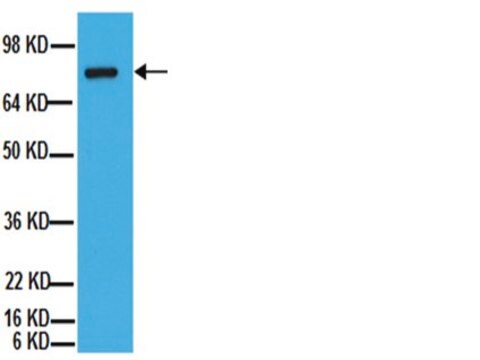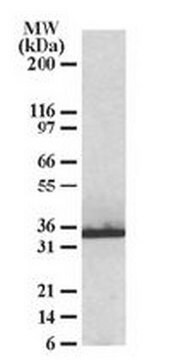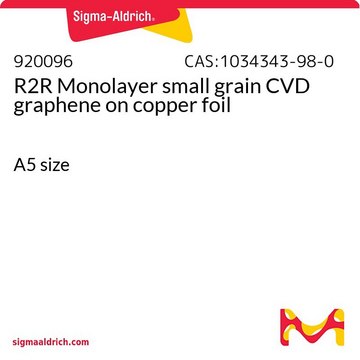AB1889
Anti-C-C Chemokine Receptor 5 Antibody, NT
Chemicon®, from rabbit
Synonym(s):
CCR-5, CD195
Sign Into View Organizational & Contract Pricing
All Photos(1)
About This Item
UNSPSC Code:
12352203
eCl@ss:
32160702
Recommended Products
biological source
rabbit
Quality Level
antibody form
purified immunoglobulin
antibody product type
primary antibodies
clone
polyclonal
species reactivity
human
manufacturer/tradename
Chemicon®
technique(s)
western blot: suitable
NCBI accession no.
UniProt accession no.
shipped in
wet ice
target post-translational modification
unmodified
Gene Information
human ... CCR5(1234)
General description
HIV and related viruses require coreceptors, in addition to CD4, to infect target cells. Some G-protein-coupled receptors including CCR5, CXCR4, CCR3, CCR2b and CCR8 in the chemokine receptor family, and four new human molecules GPR15, STRL33, GPR1 and V28 were recently identified as HIV coreceptors (1,2). Among them, CCR5 is a principle coreceptor for macrophage- and dual-tropic HIV-1 strains fusion of entry of human white blood cells (3,4). The amino-terminal domain and the extracellular loops of CCR5 serve as HIV binding sites. CCR5 messenger RNA is expressed in lymphoid organs and monocytes.
Specificity
Specific for human C-C Chemokine Receptor 5 (CCR5) at the N-terminus.
Immunogen
Epitope: N-terminus
Synthetic peptide from the N-terminal domain of human CCR5.
Application
Anti-C-C Chemokine Receptor 5 Antibody, N-terminus is an antibody against C-C Chemokine Receptor 5 for use in WB.
Research Category
Inflammation & Immunology
Inflammation & Immunology
Research Sub Category
Cytokines & Cytokine Receptors
Cytokines & Cytokine Receptors
Western blot: 1:1000 - 1:2000 (THP-1 whole cell lysate can be used as a positive control)
Optimal working dilutions must be determined by end user.
Optimal working dilutions must be determined by end user.
Physical form
Format: Purified
Purified immunoglobulin. 100 μg purified IgG in 100 μL of PBS containing 0.2% sodium azide.
Storage and Stability
Store at 2-8°C for up to 12 months.
Other Notes
Concentration: Please refer to the Certificate of Analysis for the lot-specific concentration.
Legal Information
CHEMICON is a registered trademark of Merck KGaA, Darmstadt, Germany
Disclaimer
Unless otherwise stated in our catalog or other company documentation accompanying the product(s), our products are intended for research use only and are not to be used for any other purpose, which includes but is not limited to, unauthorized commercial uses, in vitro diagnostic uses, ex vivo or in vivo therapeutic uses or any type of consumption or application to humans or animals.
Not finding the right product?
Try our Product Selector Tool.
Storage Class Code
10 - Combustible liquids
WGK
WGK 2
Flash Point(F)
Not applicable
Flash Point(C)
Not applicable
Certificates of Analysis (COA)
Search for Certificates of Analysis (COA) by entering the products Lot/Batch Number. Lot and Batch Numbers can be found on a product’s label following the words ‘Lot’ or ‘Batch’.
Already Own This Product?
Find documentation for the products that you have recently purchased in the Document Library.
T Dragic et al.
Nature, 381(6584), 667-673 (1996-06-20)
The beta-chemokines MIP-1alpha, MIP-1beta and RANTES inhibit infection of CD4+ T cells by primary, non-syncytium-inducing (NSI) HIV-1 strains at the virus entry stage, and also block env-mediated cell-cell membrane fusion. CD4+ T cells from some HIV-1-exposed uninfected individuals cannot fuse
H Deng et al.
Nature, 381(6584), 661-666 (1996-06-20)
Entry of HIV-1 into target cells requires cell-surface CD4 and additional host cell cofactors. A cofactor required for infection with virus adapted for growth in transformed T-cell lines was recently identified and named fusin. However, fusin does not promote entry
Chemokine receptors: keys to AIDS pathogenesis?
D R Littman
Cell, 93(5), 677-680 (1998-06-18)
How do viruses enter cells? The HIV coreceptors teach us a lesson of complexity.
D S Dimitrov
Cell, 91(6), 721-730 (1997-12-31)
Our team of scientists has experience in all areas of research including Life Science, Material Science, Chemical Synthesis, Chromatography, Analytical and many others.
Contact Technical Service




